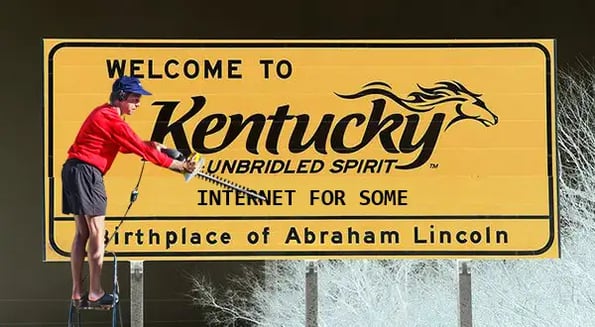Several years ago, a mule named Old Bub set off through the mountains of rural Kentucky carrying a curious cargo: The internet.

Old Bub was hired to bring fiber-optic cable to the most remote counties of the state as part of a project called KentuckyWired.
But, nearly a decade later, the project has failed in its mission to plug Kentucky into the high-speed internet economy — and it will cost more than 50x as much as forecast, ProPublica reports.
Kentucky’s way was supposed to be the I-way
Kentucky, which has the fifth-worst internet speeds in the nation, announced plans in 2014 to build an information superhighway (an “I-way”) across the state.
It was supposed to work like this: Kentucky would pay the Australian investment bank Macquarie Capital to build and run the I-way at a state taxpayer cost of $30m, roughly 10% of the $324m project’s total cost (with private and federal partners paying the rest).
But thanks to a mulishly stubborn battle between politicians and private partners, the project is now expected to cost taxpayers $1.5B.
What went wrong?
The fine print of the state’s contract with Macquarie resulted in Kentucky paying millions of dollars in penalties for delays and pushing back the project 2+ years.
According to state officials, the project’s timeline was unrealistic from the beginning — and when the timeline took a turn for the tumultuous, Kentucky ended up paying for it instead of Macquarie.
Now Kentucky’s new governor, Matt Bevin, who was elected after the contract for KentuckyWired was drafted, is stuck with a conundrum.
A tangled cable
If The Bluegrass State sticks with the project, it will cost taxpayers billions more than expected; if it backs out, it will still owe billions to private partners — and still won’t have good internet.
If it’s ever built, KentuckyWired promises internet speeds 50x faster than current bandwidth allows.
Gov. Bevin’s office claims to be committed to completing the project across the remote corners of the state — even in the areas that require teams of mules to run cable.
But not everyone is convinced it will happen — and it won’t be done until 2020 at the earliest.

